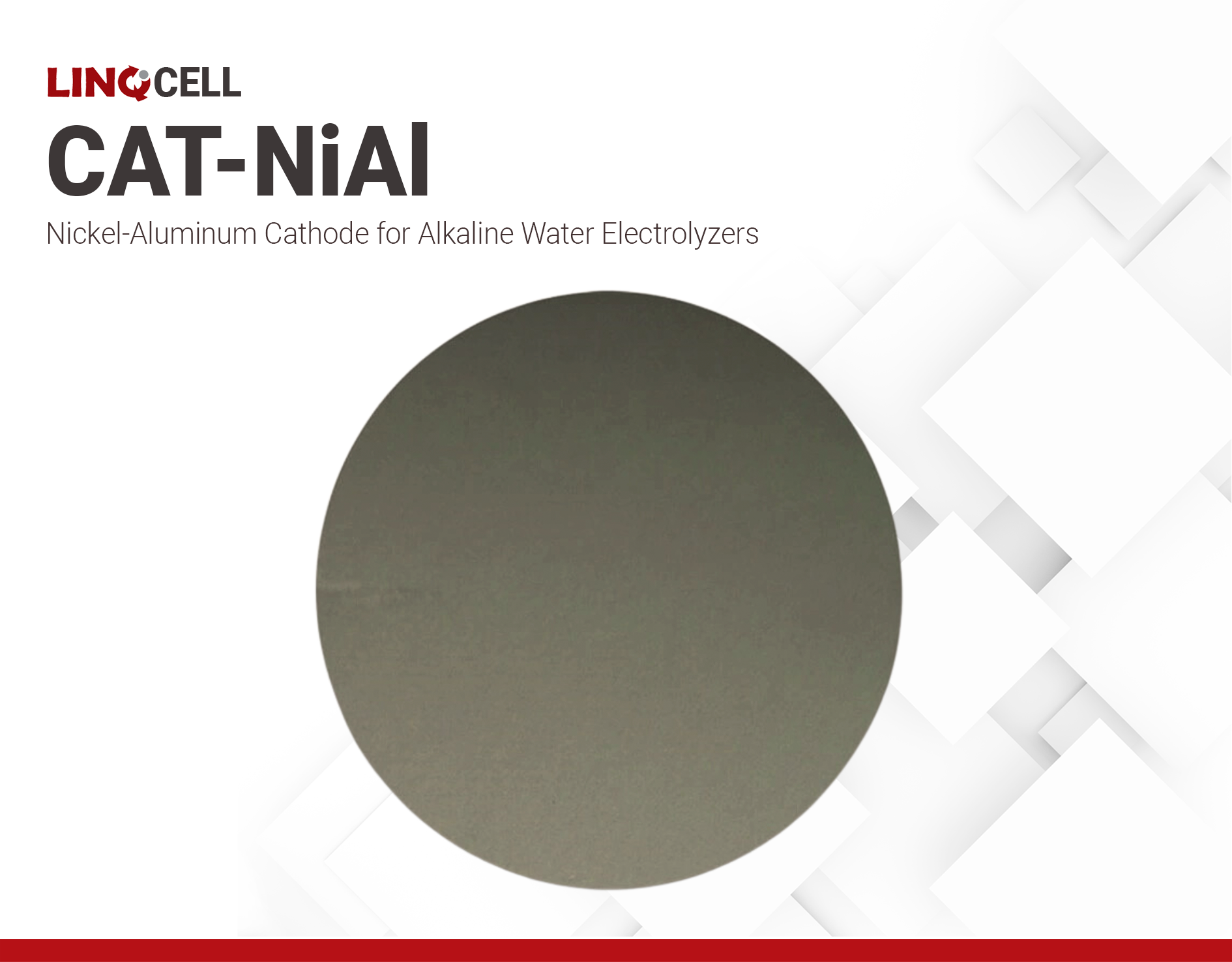LINQCELL CAT-NiAl
- Low overpotential for hydrogen evolution reaction
- Platinum-group metal (PGM)-free catalyst
- Optimized as cathode for alkaline water electrolyzers
Product Description
LINQCELL CAT-NiAl is a nickel-based electrode with nickel alloy catalyst layer deposited through plasma spray coating. It registers low overpotential for the hydrogen evolution reaction (HER), the cathodic reaction in electrochemical water splitting. While platinum is traditionally used to catalyze HER, its scarcity and high cost make transition metals like nickel strong alternatives. Nickel, in particular, demonstrates exceptional catalytic activity in alkaline solutions. CAT-NiAl is based on binary Raney nickel, which outperforms the conventional 80/20 nickel–aluminum catalysts in terms of HER overpotential, making LINQCELL CAT-NiAl a reliable, cost-effective, and high-performance cathode for alkaline water electrolyzers.
Key Features:
- Strong Catalytic Activity: The cathode demonstrates strong catalytic activity for the hydrogen evolution reaction (HER), crucial for efficient water splitting.
- Excellent Stability: The cathodes have maintained their coating adhesion, voltage, and overall performance after 1000 hours of testing under a constant current of 10000 A/m2.
- Cost-Effective Alternative to Platinum: By using nickel-based alloys and a nickel alloy catalyst layer, the LINQCELL CAT-NiAl provides a more affordable solution compared to traditional platinum-based catalysts.
Highly Recommended for:
- Alkaline water electrolyzers, specifically as cathode for hydrogen production.
LINQCELL CAT-NiAl comes in different sizes to meet various device design requirements. Contact us for custom sizes or other specific requirements.
Technical Specifications
Additional Information
LINQCELL CAT-NiAl Properties
| Property | Value | Test Method / Conditions |
|---|---|---|
| Hydrogen Evolution Reaction Performance | |Current| at –1.5 V > 1 A | Linear sweep voltammetry/ –1.5 to –0.3 V vs. Hg/HgO |
| Mechanical Stability | Weight loss < 1% | Ultrasonication / 120 W, 60 min |
| Electrochemical Stability | Performance decay <2% |Current| at –1.5 V > 1 A | Cyclic voltammetry/ –1.5 to –0.3 V vs. Hg/HgO (200 cycles) at 30% KOH, 30 (±1)°C |



